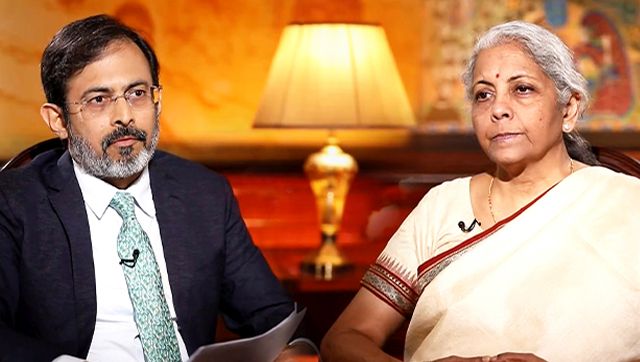Failing to excite, is exactly what the Union Budget 2013-14 does to the CIO community. But, there is at least comfort in the fact that it failed to throw up any surprises, which meant no scope for any bad news as well. If staleness was not a state to be despised, then it would have been a virtue that could have been ascribed to this budget.
“While from an overall economy perspective the announcements to tackle fiscal deficit and increase in planned expenditure are positive, I don’t really see anything much for me as a CIO in the budget,” feels Vijay Sethi, VP – Information Systems and CIO of Hero MotoCorp.
Curbing the fiscal deficit and increase in planned expenditure means a boost to the economy from an infrastructure perspective and boost to the industry, which in turn will help businesses and ultimately positively impact the IT functions within these businesses. But, this is a view from a 30,000 ft perspective. All this sounds very good and positive, but if one were to really look down, let’s say, from a 6ft perspective and get into the granularities, then the specifics don’t really add up to anything significant for the CIOs.
So, rather than talk about what the budget gave to the CIOs it would make more sense to delve on what it didn’t give to them.
Reforms And Clarity Around Taxes Sorely Missed
Any reforms or sops on the tax front were sorely missed. There was no announcement around service tax or VAT, which could have made the procurement of IT products and services any cheaper. “As a CIO of an IT services company, I am happy to see the growth of Government spending on IT infrastructure. Although the overall budget seems quite balanced, I feel there was a lot of scope to look into the various facets of IT industry including issues around taxation,” says Subramanya C., Global CTO, Hinduja Global Solutions.
Last budget’s increase in service tax from 10 percent to 12 percent was not rolled back, as hoped by the CIO community. “From a CIO’s perspective I think service taxes should been relaxed to encourage the adoption rate towards services like cloud, etc.,” explains Davesh Shukla, CIO, DIAL.
In his blog post on pre-budget expectations of IT decision makers, Sanchit Vir Gogia, Principal Analyst, IDC had stressed on the need for government to implement a simplified tax regime, which did not come. “Double taxation on software significantly increases TCO for the organisation. The government levies multiple levels of taxes – sales tax/VAT, CVD/Excise Duty and service tax – when you procure new software. While multiple amendments have been made to the law, Government still does not have a clear stand and organisations continue to pay 15-25 percent higher for software products,” stated his blog. (You can read the blog at http://asdisruptiveasitgets.com/ ) As a result confusion continues to persist and CIOs will continue to bear the brunt of higher TCO as they have been doing in the past, which otherwise could have otherwise been brought down.
GST: Waiting For Godot
Again on the tax front there continues to be lack of clarity around GST. While the finance minister did state that the draft bill on GST will be tabled in the parliament in the next few months, there is no clear roadmap around timeframe for its rollout. The chances of its coming through this financial year seem vague.
According to Gogia, here’s why it should matter to the CIOs: GST would have made life simpler and easier. For instance, for an enterprise rolling out of ERP across different states lack of GST means adhering to the specific tax regime of each state, thereby leading to complexity. Further, different states have different taxes on procurement of servers in the absence of GST. Hence, from a cloud stand point, if you have cloud contracts signed in different states, it will have an impact on the procurement of cloud. Implementation of GST means removing some of the complexity out of the high level of ambiguity around the current tax structure for cloud computing.
“GST will really change the entire business and decision making structure. From a CIO’s perspective he needs to build IT in the back-end to support those changes and take care of GST. Every year I have been talking to my team about preparing to get set for GST, but it doesn’t seem to be happening,” says Sethi as he provides another angle to the GST impact. Like him many other CIOs will be waiting in anticipation for a clearer roadmap to make themselves prepared at the back-end.
Omitting Cloud
But, more than the expectations on the tax sops, what really was expected was a budget that started to make an effort towards recognising the new wave of IT, i.e. cloud computing. “This shows that we are still being led by a vendor-driven push to cloud, and that as a country we are not really geared towards the next level of IT,” opines Gogia. He further stresses on the fact that cloud needs to become a part of our future budgets to come, considering the huge potential it holds in driving government to citizen services. “As an e-governance institution if you can procure a central pool of resources that can be scaled up and down, consider the kind of boost it will bring to the whole paradigm of public services. This is an aspect that has not been considered in the budget at all,” he adds. There was also nothing to boost broadband penetration, which again has a huge impact on cloud adoption.
On the plus side, there is a lot of talk around boost to infrastructure, which should also include IT infrastructure. Kamal Karnatak, VP - Sr. Vice President and Group CIO, RJ Corp is hopeful about the low interest rate funds to be provided from Clean Energy Fund for green projects for a period of five years. However, he adds that one would need to see if Green Datacentres can be qualified for this. “If yes, then this is an extra incentive to move towards green data centre,” he adds.
So, as they say the devil lies in the details. And, we will see the real impact as these details unfurl over the coming months.
With inputs from Robin Chatterjee.


)




)
)
)
)
)
)
)
)